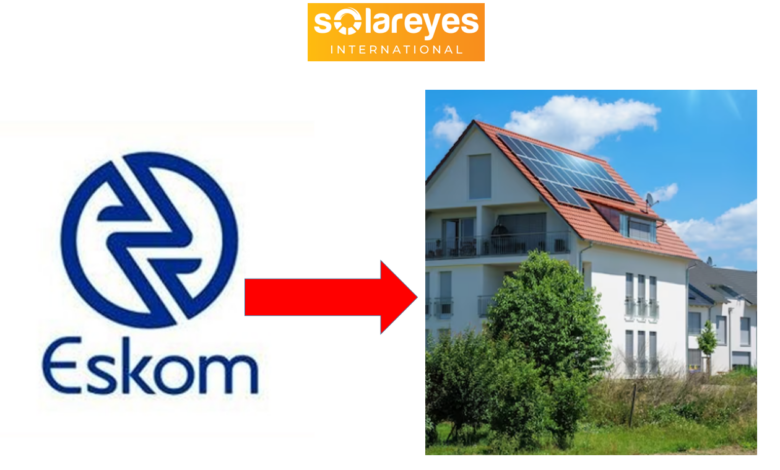How to Generate Your Own Electricity and do away with Eskom in South Africa – a step-by-step guide
How to Generate Your Own Electricity and do away with Eskom in South Africa - a step-by-step guide

Being connected to the grid but suffering from load shedding is one of the most disturbing things in life. If this is your case then surely there is need to explore other options of generating your own electricity. If you want to do away with your utility bills and generate your own electricity, then today we have you.
In South Africa, there has been a rising concern over the power supply and efficiency of Eskom, the national electricity supplier. Frequent power outages and load shedding have become the norm and are costing the economy millions of Rands every day. It is, therefore, not surprising that many people are now opting to generate their own electricity to reduce their reliance on Eskom. We will take a detailed look at how to do away with Eskom and generate your own electricity in South Africa, step-by-step.
Tips on How to Generate Your Own Electricity and do away with Eskom in South Africa – a step-by-step guide
Step 1: Conduct a Load Assessment
You can provide a solution on the problem you don’t know. The first step in generating your own electricity is to conduct a load assessment. This involves analyzing your household’s electricity usage to determine how much power you consume daily. A simple table like below will help to understand both the power requirements and energy requirements as both matter. Examples of loads or appliances filled in the Table below are just as an example.
| Appliance | Unit Power rating(W) | Quantity | Total Power |
| LED Lights | 8 | 20 | 160 |
| Air conditioner | 1500 | 1 | 1500 |
| TV | 80 | 2 | 160 |
A comprehensive approach is to plug or connect a power analyser to your main electrical meter and get your energy and power consumption data for about two weeks. This method is more accurate.
The other simpler but effective approach is to get your electricity bill as this will give you the total energy consumption usually for a month. Some electrical utility bills also contains power information which is helpful.
ALSO CHECK: Project Management Team Lead (Services) – Schneider Electric, Johannesburg (Gauteng)
This information will help you choose the right type of system that will meet your energy needs. You can conduct a load assessment by using a power meter, or by looking at your electricity bill and identifying your average daily consumption.
Step 2: Evaluate Your Options
Once you have conducted a load assessment, the next step is to evaluate the various options available to generate your own electricity. The most common options for residential homes in South Africa include solar power, wind power, and micro-hydro power. Each option has its own advantages and disadvantages, and you should choose the one that best suits your needs.
Solar power is the most popular option in South Africa, and involves installing solar panels on your roof to capture energy from the sun. For this you will need other components of a solar system to make the solution complete. Read this article on solar system components and their functions. Also check Top 10 Solar Companies in South Africa in order to understand best solar companies in South Africa. You should understand that a solar solution would require an upfront commitment even though the system will generate free energy afterwards. All this should be factored into the budget as we will explain in the next Section on budget requirements. Keep following as we will elaborate on how to get your solar system in South Africa. For now, check: HOW TO SIZE A SOLAR SYSTEM – 5 clear steps anyone can follow.
Wind power involves installing a wind turbine to generate electricity from wind energy. Micro-hydro power, on the other hand, involves generating electricity from water flowing through a small turbine. Depending on the location and budget, some of these option might not be viable for some locations and use cases. Therefore you have to understand the best solution for your case
The other option, though not green, is a diesel generator. Some people prefer to just by a 5kVA diesel genset as a stop gap measure for their electricity woes. Challenges of this option include maintenance and fuel logistics requirements.
Step 3: Determine Your Budget
Determining your budget is an essential step in the process of generating your own electricity. It is essential to have a realistic budget in mind as this will help you determine the size and type of system you can afford. Solar power systems are generally more expensive than wind power, genset or micro-hydro power systems, and you should factor this into your budget.
Step 4: Obtain Permits and Approvals
Abide by the laws and don’t be on the negative side of the law. Before you can install a system to generate your own electricity, you will need to obtain the necessary permits and approvals. These include building permits, electrical permits, and planning approvals. It is important to ensure that you comply with local regulations and laws to avoid any legal issues.
Step 5: Install Your System
Once you have obtained all the necessary permits and approvals, the next step is to install your system. The installation process will vary depending on the type of system you have chosen. Solar power systems typically involve installing solar panels on your roof, while wind power systems involve installing a wind turbine. For more sophisticated and technical work, you might need an expert to do such installations.
Step 6: Connect Your System to the Grid
This is optional and is only applicable to those that need to feed into the grid. After installing your system, the next step is to connect it to the national electricity grid. This is known as net-metering, which allows you to sell any excess electricity back to Eskom. You will need to have a certified electrician connect your system to the grid.
Conclusion
Generating your own electricity in South Africa is not only a way to reduce your reliance on Eskom but also a way to save money in the long run. By following these step-by-step guide, you can effectively do away with Eskom and generate your own electricity.
Remember to conduct a load assessment, evaluate your options, determine your budget, obtain permits and approvals, install your system, and connect it to the grid. With this information, you can take control of your electricity supply and ensure that you have a reliable source of power, no matter what happens.
FOLLOW US ON SOCIAL MEDIA
Follow us on LINKEDIN, FACEBOOK, TELEGRAM GROUP and WHATSAPP.
ALSO CHECK: Project Management Team Lead (Services) – Schneider Electric, Johannesburg (Gauteng)
